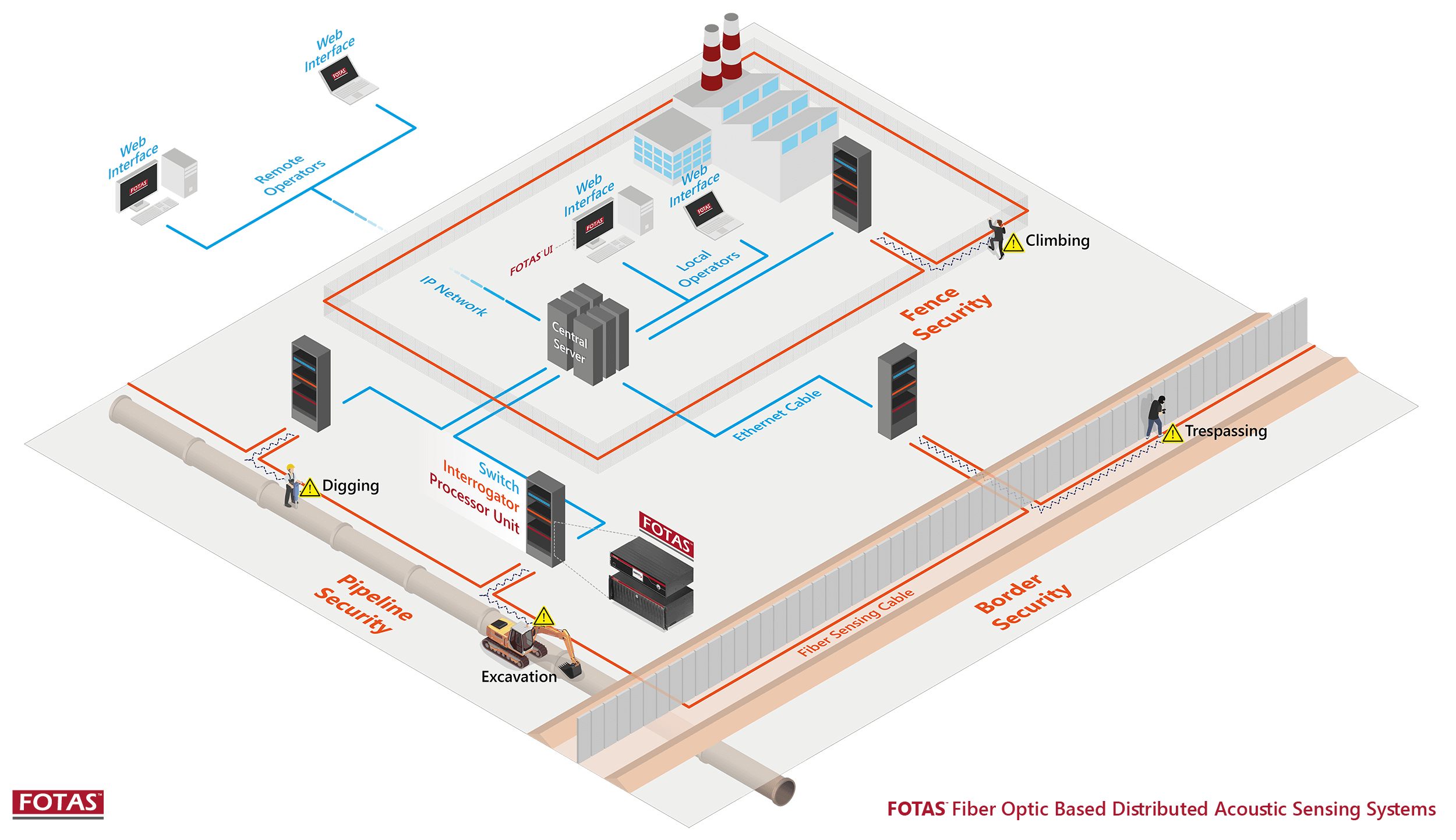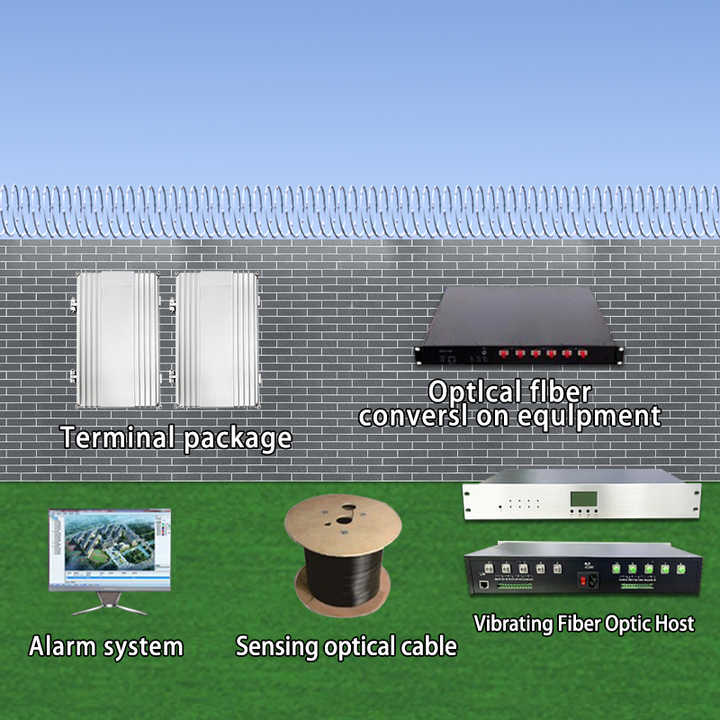The Role of Fiber Security in Boosting Your Cyber and On-Site Security Network
The Role of Fiber Security in Boosting Your Cyber and On-Site Security Network
Blog Article
The Ultimate Guide to Fiber Optic Safety Solutions for Your Business
In an age where safety and security problems are vital for companies, recognizing the intricacies of fiber optic modern technology can be transformative. This overview lays out exactly how incorporating fiber optic protection systems not just enhances data protection yet also uses advantages like resistance to interference and real-time tracking capabilities.
Recognizing Fiber Optic Innovation

The core of a fiber optic cable is composed of a thin glass or plastic center, bordered by a cladding layer that shows light back right into the core. Single-mode fibers are made for long-distance transmission, while multi-mode fibers are suitable for much shorter ranges, frequently made use of within buildings.
Fiber optics are not just much faster yet also much more secure than conventional circuitry. Their inherent resistance to electro-magnetic interference and the problem of using the signal without detection make them a favored choice for companies focusing on information honesty and safety and security. As organizations increasingly count on protected and reliable interaction systems, understanding fiber optic technology comes to be important for notified decision-making.
Key Advantages of Fiber Optic Safety
When thinking about security options for a business, the benefits of fiber optic systems are specifically engaging. First and primary, fiber optic modern technology supplies outstanding data transmission speeds and bandwidth capacity, making it optimal for taking care of high-resolution video clip feeds from security cams. This capability guarantees that safety and security workers get real-time information, improving general feedback times to potential protection risks.
Moreover, fiber optic wires are inherently immune to electromagnetic disturbance, which can endanger the integrity of standard copper-based systems. This resistance ensures that the data transferred continues to be protected and nonstop, providing a much more trusted safety and security infrastructure. Additionally, fiber optics are much less at risk to physical damages, as they are made from glass instead of metal, lowering upkeep prices and downtime.
Fiber optic systems provide enhanced cybersecurity attributes, including encryption capabilities that shield delicate data from unauthorized accessibility. Collectively, these advantages make fiber optic safety and security systems a robust selection for businesses seeking to improve their safety measures.
Installation Refine and Factors To Consider
Thinking about the intricacies included, the installation process of fiber optic security systems needs cautious preparation and implementation. The first step includes an extensive website evaluation to determine optimal areas for cabling and equipment. This analysis must think about ecological factors, existing infrastructure, and potential susceptabilities.

Additionally, the setup must abide by local building codes and sector criteria. find out this here This might consist of coordinating with numerous stakeholders such as structure supervisors, IT teams, and safety and security workers to you can look here make certain seamless integration with existing systems.
Post-installation, strenuous testing is needed to confirm system efficiency and determine any kind of concerns that may occur. By focusing on these considerations throughout the installment process, organizations can ensure a durable and efficient fiber optic protection system that fulfills their certain security needs.
Newest Technologies in Fiber Optic Security
Recent improvements in fiber optic innovation have actually substantially enhanced the capacities of security systems for organizations. Among one of the most significant developments is the assimilation of fiber optic sensing units that can find resonances and breaches along the boundary of a center. These sensors offer real-time tracking, enabling rapid reaction to prospective breaches.
In addition, the growth of dispersed fiber optic noticing innovation permits the continuous surveillance of huge locations with a solitary fiber cable. This method not just decreases setup costs but also boosts the dependability of monitoring systems by removing the demand for multiple, different sensing units.
Furthermore, developments in multiplexing strategies have actually enabled organizations to transfer substantial quantities of data over fiber optic networks, improving the abilities of video surveillance systems. High-def video feeds can now be you could try here sent over long ranges without loss of high quality, ensuring that protection workers have access to clear and actionable info.
Lastly, the usage of expert system (AI) along with fiber optic systems is transforming threat detection. AI algorithms can analyze information from fiber optic networks to recognize unusual patterns or habits, permitting positive security procedures. These developments collectively stand for a substantial leap ahead in fiber optic security innovation.
Choosing the Right System for Your Company
Choosing the suitable fiber optic safety and security system for your company is important for guaranteeing optimal security and comfort. To make an educated choice, evaluate your specific safety requirements, taking into consideration factors such as the size of your premises, the nature of your procedures, and potential vulnerabilities.
Begin by assessing the degree of safety required; for circumstances, risky settings may demand innovative systems with integrated surveillance and breach discovery capabilities. Next off, think about scalability; as your service expands, your security system need to can broadening to accommodate increased demands without significant overhauls.
Additionally, explore the reliability and efficiency of numerous systems. Try to find companies with recognized track records and client reviews that confirm to their solution quality. It's additionally advisable to inquire regarding the technology's compatibility with existing infrastructure, ensuring a seamless integration procedure.
Verdict
In verdict, fiber optic protection systems provide a durable solution for improving company safety and security facilities. The newest innovations additionally strengthen the performance of these systems, making certain that companies continue to be secure and adaptable in an ever-evolving danger landscape.
Report this page